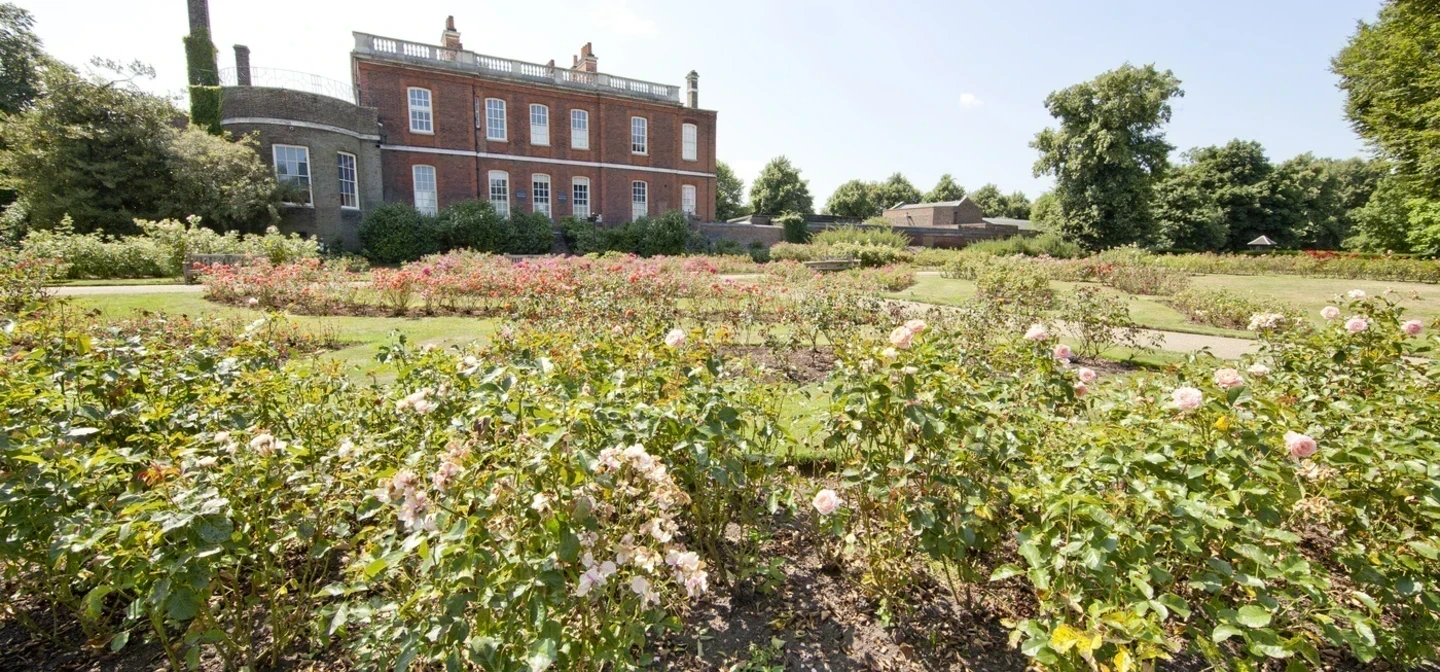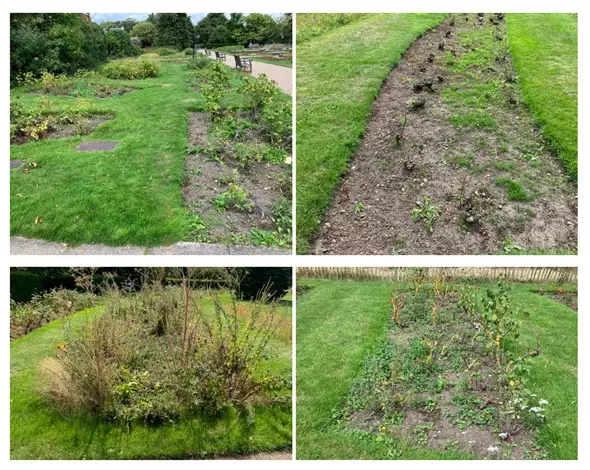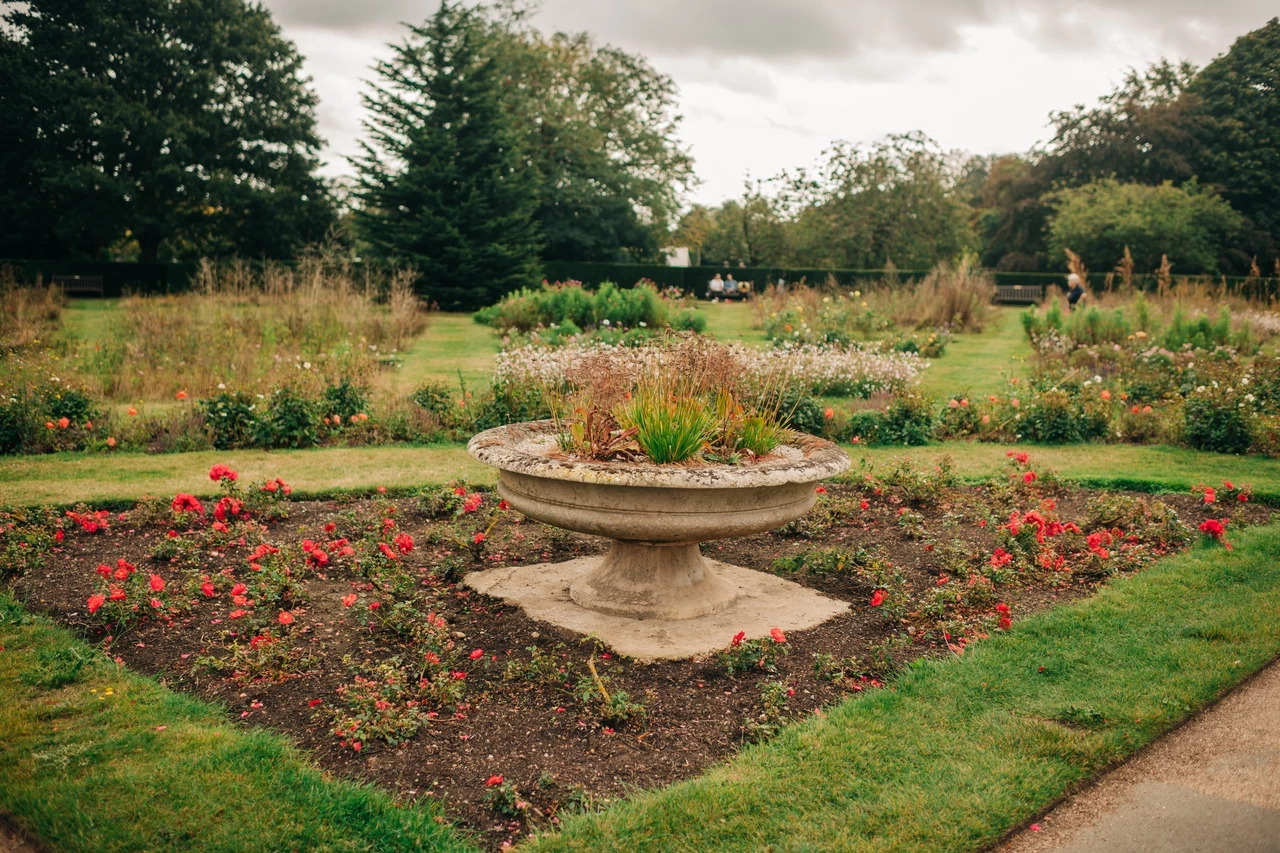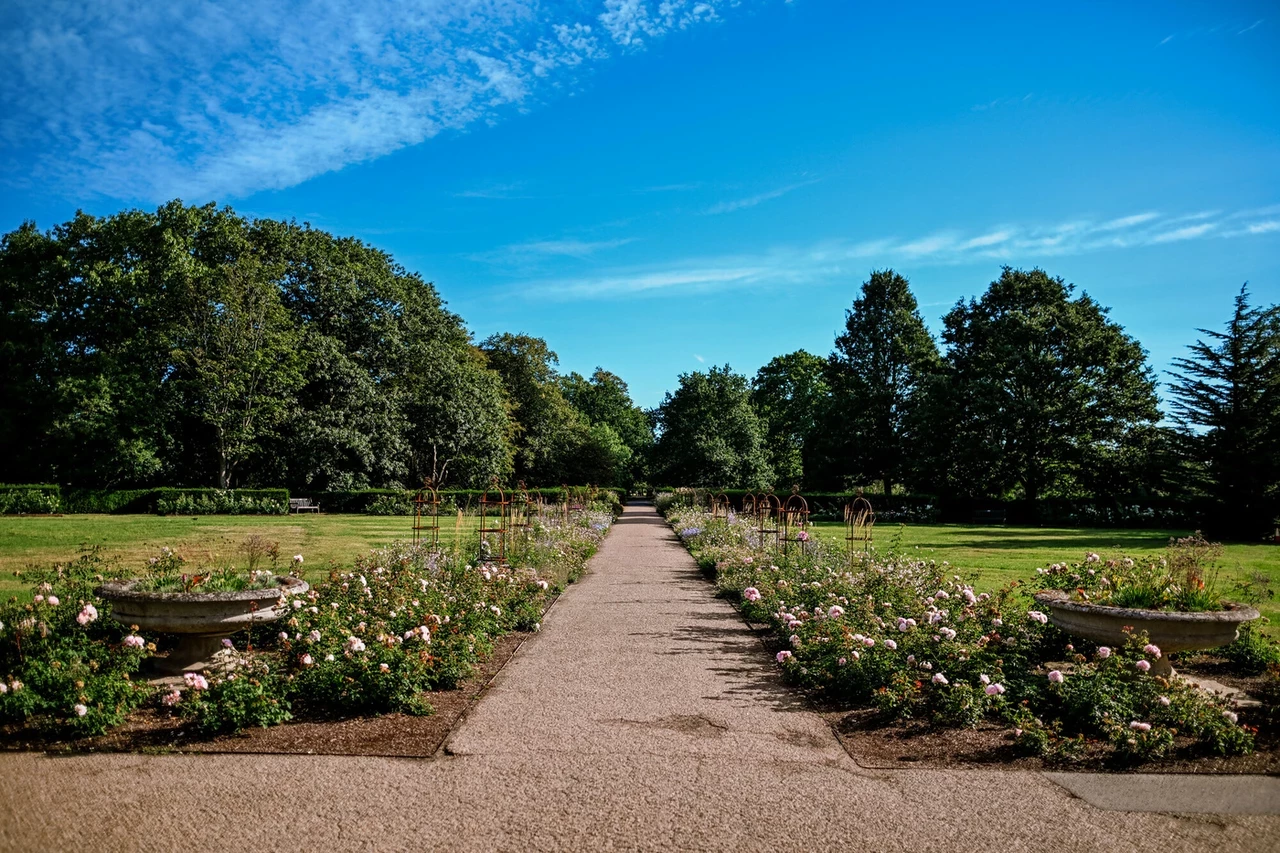
The Rose Garden
The classical beds of the Rose Garden are home to a variety of flowers, which create a vibrant, colourful display each summer.
Greenwich Park's popular Rose Garden is located on the western side of the park and forms the backdrop to the Ranger's House, an elegant Georgian villa which was originally the residence of the park ranger.
The house now belongs to English Heritage and houses The Wernher Collection, a remarkable collection of works of art amassed by diamond magnate Sir Julius Wernher (1850-1912).
The Rose Garden was originally planted in 1960-61. It was enlarged and replanted in 1993-4 at which time it was enclosed by a yew hedge.
The beds are laid out in a semi-circular design and planted with predominantly hybrid tea and floribunda roses.
Extremely popular with the park visitors, the Rose Garden peaks in flowering during June and July.
The Rose Garden regeneration project
We are reviving and redesigning the Rose Garden in an exciting three-year project.
The Rose Garden urgently needs restoration. The existing roses have become exhausted through Rose Replant Sickness. This is a soil-borne fungal root disease that is present in the soil where roses have been grown for some time, and which can prevent the growth of or cause the death of new roses planted into those areas. A build up of rose-specific pests will also be present in and around the rose garden area, making new roses more susceptible to disease and damage.
Proposed changes
To revive and future-proof the garden we will create a beautiful new layout including new seating areas. And we will also invest in more sustainable, diverse, mixed planting schemes, to adapt to a changing climate to thrive for years to come.
Planting will incorporate many varieties of roses and rose hedges along with herbaceous perennials.
Mixed planting has been proven to have positive effects and the plan for the Rose Garden has been inspired by similar schemes in Mottisfont, a National Trust site in Hampshire, and the Rose Garden in Hyde Park.
Mixing provides varied habitats and supports the natural control of pests affecting roses (such as aphids, caterpillars, sawflies, and mites) by predators (such as wasps, ladybirds, hoverflies, and beetles).
Groundcover plants will create shade and the more diverse range of flower structures and colours further broaden the opportunities for fauna and soil flora (beneficial bacteria) to thrive. Another benefit of including herbaceous planting is the extended flowering period from Spring through to autumn and winter with attractive seed heads and rose hips providing longer enjoyment of the area, previously confined to a rose flowering period of June through to September.

Phase 1
- Rose boundary hedge - a rose hedge will be planted inside a perimeter yew hedge. Pollinator-friendly blooms will go onto produce rose hips for an extended period of seasonal interest. This hedge will frame new seating areas around small, intimate gardens.
- The Heart of the Rose Garden - central beds with urns will be planted in a homage to the traditional design, there will be two new benches looking out onto this planting.
- Mixed Herbaceous Borders - over a hundred roses will be planted as the main feature, mixed with herbaceous perennials. The colour palette will be cool with variation in herbaceous mixes.

Phase 2
• New mixed herbaceous borders will be planted with roses, herbaceous perennials running along the face of ranger’s house, the North/South pathway.
• New interior borders will be planted alongside the borders planted in phase 1 on the east and west pathway, leading up to Cherry Avenue.
• Development of the ranger’s house meadow will take place. Self-seeding bulbs to be added and small interventions will be implemented to create a good mix of robust native grasses and some flowering annuals and meadow perennials.
• Prairie style borders will complement the Ranger’s House meadow.
• Two steel pergolas will sit in the interior of the garden and be used as a frame to host rambling roses. A variety called ‘Malvern Hills,’ a pastel yellow repeat flowering rambler, will be woven with purple clematis (clematis viticella), a flowering climber, for an impressive display. The pergolas will provide well needed height to the garden but also provide a sheltered place to sit in the garden interior. There will be an accessible path concentrically passing through the structures to allow use for those who previously couldn’t enjoy the centre of the garden.
• We will be adding 17 cultivars of roses to the existing species bringing our total number of varieties to over 40. An additional 460 roses will be planted in spring 2025.
